We didn’t get these very often growing up because we didn’t know how to harvest them, and I think my parents were unfamiliar with these nuts. I’ve since developed quite a taste for them that drew my curiosity into what trees they come from and how to harvest them and how are they harvested. There are about 20 species of pine that produce seeds large enough to be worthwhile harvesting and eating; the seeds are edible in other pines, but they are two small to be worthwhile.
Historically early Europeans started cultivating pine nuts from the Stone Pine (Pinus pinea) roughly 6,000 years ago, and have been harvesting from wild trees far longer. In Europe the Swiss Pine (Pinus cembra) has also been used to a small extent. In Asia two species are widely harvested; Korean Pine (Pinus koraiensis) in northeast Asia (the most important species in international trade), and Chilgoza Pine (Pinus gerardiana) in the western Himalaya. Four other species, Siberian Pine (Pinus sibirica), Siberian Dwarf Pine (Pinus pumila), Chinese White Pine (Pinus armandii) and Lacebark Pine (Pinus bungeana), are also used periodically. Believe it or not; Afghanistan is an important source of pine nuts.
In North America there are three main species of pinyon pine; Colorado Pinyon (Pinus edulis), Single-leaf Pinyon (Pinus monophylla), and Mexican Pinyon (Pinus cembroides). There are eight other species that are harvested to a small extent; the Gray Pine (Pinus sabineana), Coulter Pine (Pinus coulteri), Torrey Pine (Pinus torreyana), Sugar Pine (Pinus lambertiana) and Parry Pinyon (Pinus quadrifolia).
If you’re not familiar with identifying pine over other conifers remember to “look for the number of needles that come out of the same spot on a twig. If a twig bears needles in groups of two, three, or five, you can safely call it a pine. If the twig carries its needles singly, it’s a good bet you’ve got a fir or a spruce” (Fir vs. Spruce vs. Pine: How to tell them apart by Steve Aitken).
“Pine cones are comprised of many overlapping scales. Within each scale there are one or two pine nuts, depending on the species. Heat and/or dryness causes the scales to open up, releasing the nuts within.”
When you are looking for pine cones to harvest first locate a bunch of pine trees; simple enough in the Rockies. Make sure the branches have both open and closed pine cones on them. If there are no open cones then the nuts and pine cones are probably not ripe yet. And don’t worry too much with those that are already open; odds are the nuts have already fallen or been eaten by wildlife.
Once these cones are harvested into a burlap bag it can take up to 20 days for the cones to fully open. They can be assisted in the process by direct exposure to sunlight or mild heat in the oven. When the cones are open the cones can be swung in the sack and struck on a hard surface; this will cause the cones to shatter and leaving the task of separating the seed from the residue.
Once these nuts, or seed, are separated from the rubbish they will still need to have their shells cracked; like a sunflower seed but more sturdy. You can crack them with your teeth, but depending on the variety; I prefer other methods. Don’t be thrown off if the nuts are a little softer than expected. We periodically ate these growing up, and they tend to have a different consistency than other nuts.
As a side note “pine nuts can cause taste disturbances, lasting from a few days to a few weeks after consumption. A bitter, metallic taste is described. Though unpleasant, there are no known lasting effects, with the FDA reporting that there are no apparent adverse clinical side effects.”
100 grams of dried pine nuts contains:
Calories: 673
Carbohydrates: 13.08 g
Fats: 68.37 g
Fibers: 3.7 g
Protein: 13.69 g
Cholesterol: 0 mg
Try them out and enjoy; it’s a great wild flavor and packed with stuff your body needs.
Jon
I drew some of my info from http://www.pennilessparenting.com/2011/02/harvesting-pine-nuts-foraged-food.html; it’s a good article, check it out.


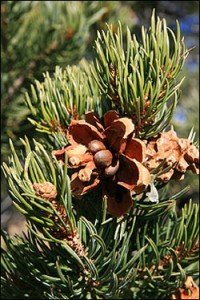
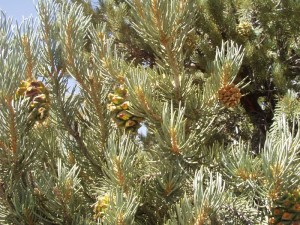
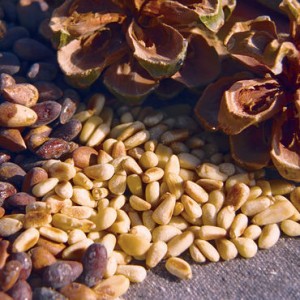
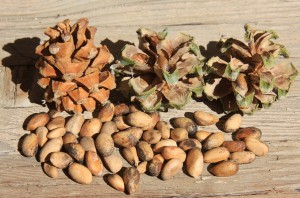
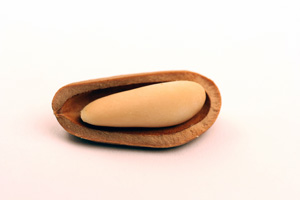
Leave a Reply